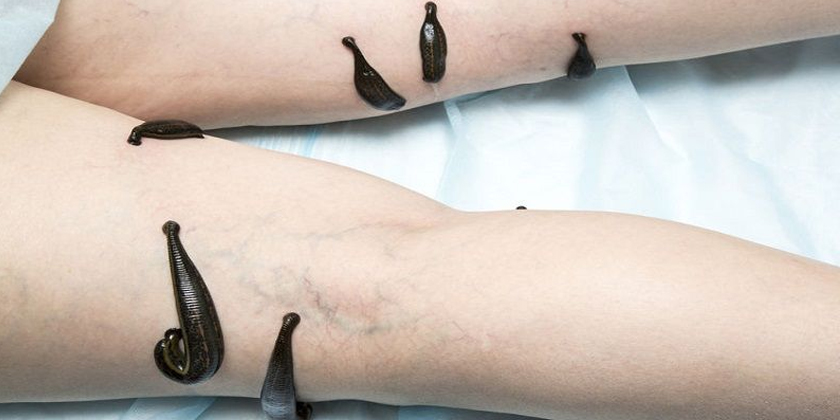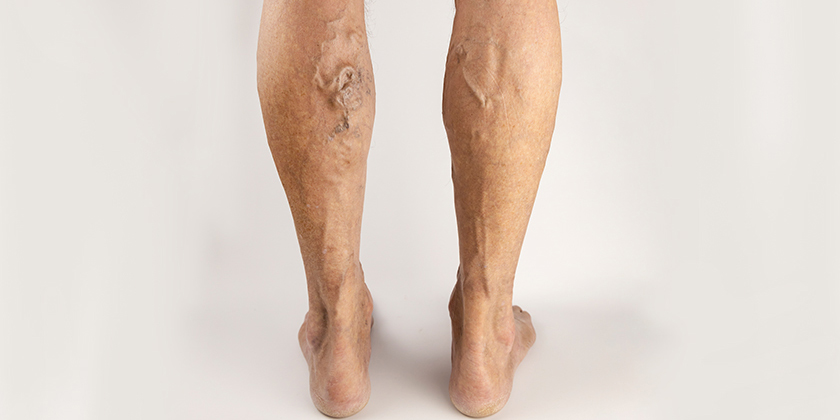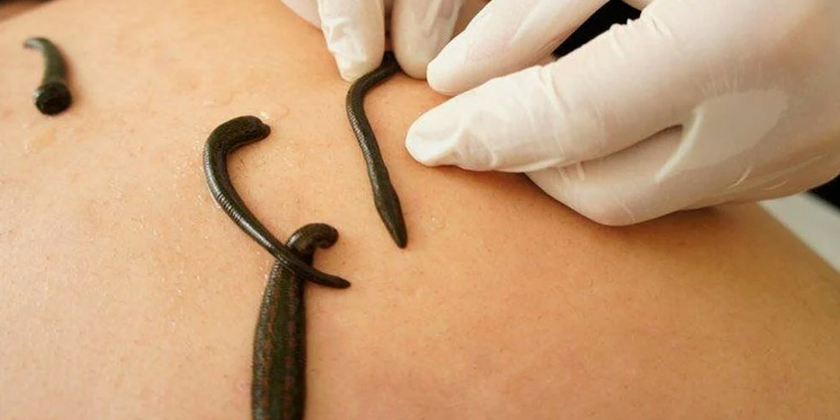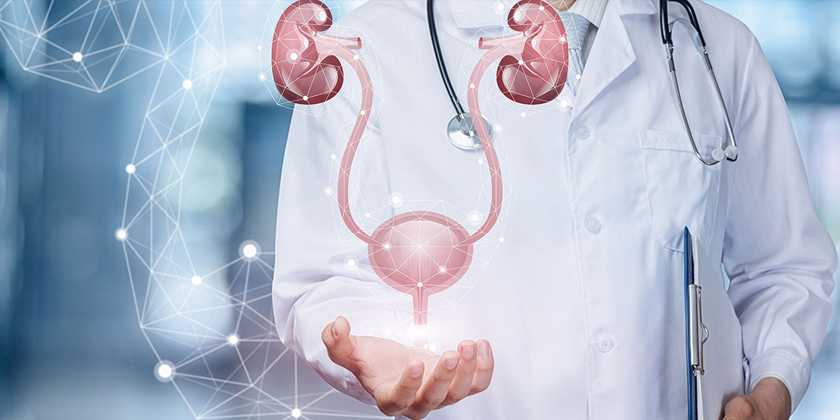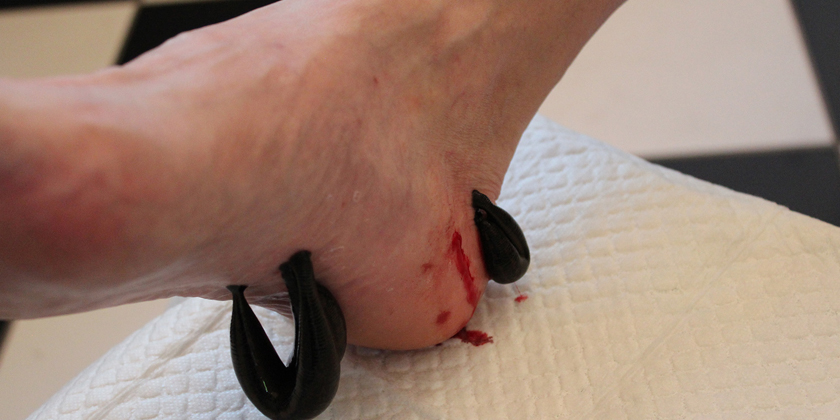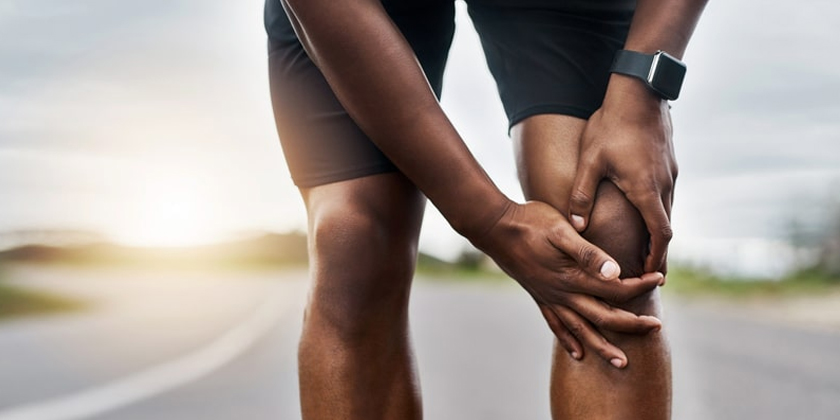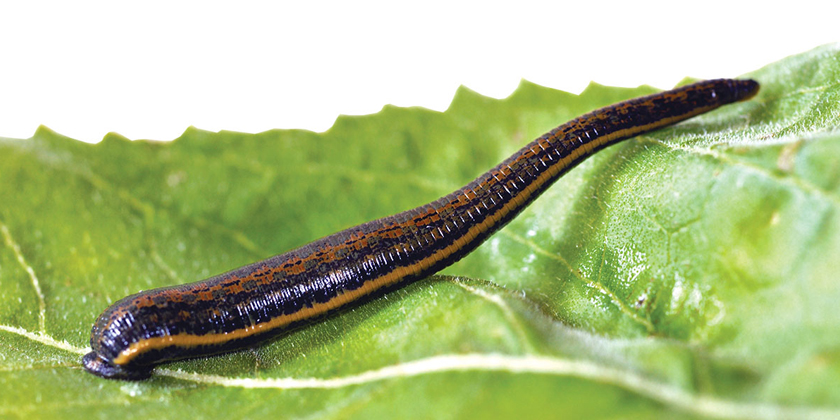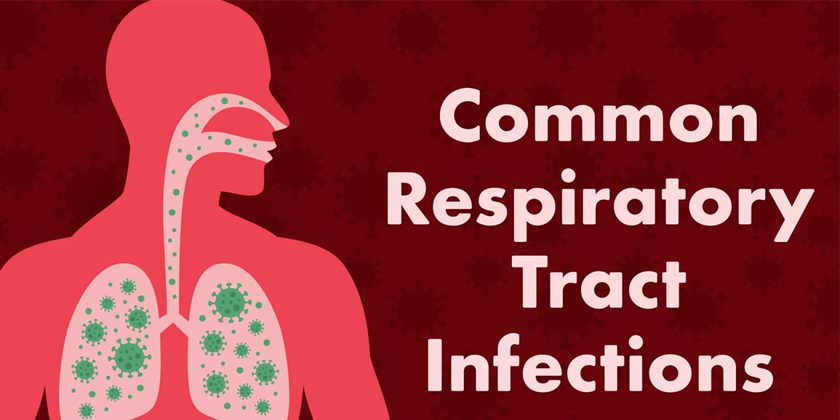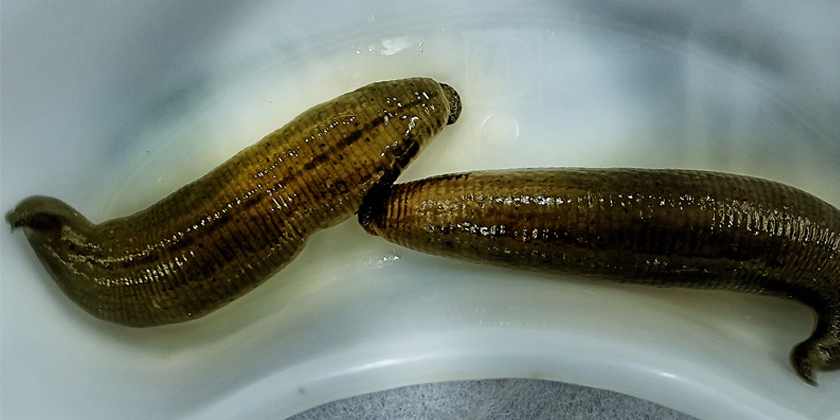Leech Therapy for Deep Vein Thrombosis: An Alternative Approach Featured Snippet-Style IntroductionMedicinal leeches (Hirudo medicinalis) are used in leech therapy to enhance blood circulation and decrease venous congestion for deep vein thrombosis patients while this condition affects 1–2 people per 1,000 each year according to CDC data. Hirudotherapy represents an alternative medicine practice that remains non-standard but researchers study it as a possible treatment for blood clots according to NCBI. This guide provides information about how leech therapy works along with its potential advantages and possible risks and limitations. What Makes Leech Therapy a Possible Treatment Option for Deep Vein Thrombosis? Deep vein thrombosis untreated may result in the dangerous pulmonary embolism complication which carries a death risk of 10–30% according to the American Society of Hematology. With five years of public health research work I have conducted studies on hirudotherapy for vascular health applications. Anticoagulants including heparin remain the primary treatment for blood clots but leech therapy shows potential anticoagulant and anti-inflammatory benefits in specific cases despite limited supporting evidence (Frontiers). How Leech Therapy Works 1. Mechanisms of Hirudotherapy The therapeutic potential of leech saliva lies in its bioactive compounds which could theoretically offer advantages for deep vein thrombosis issues. Anticoagulant Action: Hirudin inhibits thrombin, preventing clot progression (Healthline). Anti-Inflammatory: Eglins and bdellins serve to diminish swelling while delivering inflammation relief as reported by ScienceDirect. Blood Flow Improvement: Leech therapy‘s suction mechanism combined with passive bleeding helps to reduce venous congestion according to NCBI. 2. Application in DVT While leech therapy isn’t the main treatment option for deep vein thrombosis it may serve as a supplementary approach in certain situations. Localized Congestion: Reducing edema in superficial veins post-DVT (ResearchGate). Chronic Venous Insufficiency: The African Journal of Vascular Medicine details how to treat post-thrombotic syndrome symptoms including swelling. Adjunctive Use: Leech therapy serves as a supplementary treatment in complex medical cases but lacks scientific validation (PubMed). Potential Benefits of Leech Therapy Inflammation Relief: The saliva from leeches can help diminish swelling in affected body parts and alleviate discomfort according to ScienceDirect. Localized Blood Flow: Applying suction therapy may help reduce venous congestion which leads to enhanced vascular health according to Gavin Publishers. Pain Reduction: Analgesic compounds deliver short-term pain relief for patients suffering from post-thrombotic syndrome according to Frontiers. Non-Invasive Option: Patients with blood clots might find leech therapy to be a helpful treatment option in certain situations since it eliminates the need for surgical procedures (NCBI). Risks and Limitations Infections: Patients face a 7–20% chance of contracting Aeromonas bacterial infections which may exacerbate vascular health conditions (PubMed). Excessive Bleeding: Transfusions become necessary for half to all patients which raises additional risks for those with DVT according to PMC research. No Direct Clot Dissolution: Leeches cannot dissolve existing blood clots since they function differently compared to thrombolytics (JAMA Network). Lack of Evidence: Medical News Today reports that randomized trials do not exist to support the use of leech therapy for treating deep vein thrombosis. Contraindications: Healthline advises against using leech therapy for patients who take anticoagulants or those who have anemia or immune system deficiencies. Scientific Perspective and Research Gaps The 2024 review confirmed that hirudotherapy helps reduce venous congestion during reconstructive surgeries but failed to find direct evidence supporting its use for DVT treatment (Frontiers). Research from the African Journal of Vascular Medicine indicated that leech therapy reduced edema in post-thrombotic syndrome but produced inconsistent results. Anticoagulants and compression dressings achieve a 90% success rate in treating DVT while leech therapy lacks comparable clinical data according to the American Society of Hematology. The experimental status of leech therapy for deep vein thrombosis emerges from my analysis because its risks surpass the yet-to-be-proven benefits. Clinical trials are essential. FAQ: Leech Therapy for Deep Vein Thrombosis Leech therapy for deep vein thrombosis involves using leeches to treat venous congestion and inflammation despite its experimental status and lack of standard treatment data. Leech therapy for deep vein thrombosis employs leeches to potentially alleviate venous congestion and inflammation yet remains outside standard treatment protocols (NCBI). Can it dissolve blood clots? Anticoagulants are essential in treating blood clots because leeches cannot dissolve them (JAMA Network). Is it safe for DVT patients? The therapy poses infection and bleeding risks which are particularly pronounced for patients taking anticoagulants (PubMed). Should I try leech therapy for DVT? The CDC advises seeking medical advice because established treatments provide better vascular health results. Conclusion: Does Leech Therapy Constitute a Suitable Treatment Option for Deep Vein Thrombosis? Leech therapy for treating deep vein thrombosis lacks scientific validation as an alternative medicine treatment despite theoretical benefits for reducing inflammation and venous congestion but fails to treat blood clots (NCBI). While hirudotherapy follows holistic healing practices and can serve as an adjunct therapy in select cases it presents potential dangers including infection and bleeding that demand careful consideration. The focus of my research lies in validating treatments such as anticoagulants to support vascular health. A vascular specialist should evaluate your condition before you use leech therapy.
The Ultimate Guide to Understanding Common Vascular Conditions
What Are Common Vascular Conditions? Featured Snippet-Style IntroductionPeripheral artery disease (PAD), varicose veins, deep vein thrombosis (DVT), and aneurysms represent vascular conditions that affect blood vessels including arteries and veins along with capillaries. According to WHO over 200 million people worldwide suffer from vascular disorders which damage both circulation and general health. Our ultimate guide details everything you need to know about vascular health including its causes and symptoms and how to treat and prevent related conditions. Why Understanding Vascular Conditions Matters Vascular diseases result in 17 million cardiovascular-related deaths each year according to Global Burden of Disease data. Through five years of public health research I have examined how vascular health awareness helps prevent severe outcomes such as strokes and amputations. When people understand their health better they choose early treatment options and maintain lifestyle habits that prevent diseases. Key Common Vascular Conditions 1. Peripheral Artery Disease (PAD) Peripheral artery disease creates reduced blood flow due to arterial narrowing affecting primarily the legs. Prevalence: The CDC reports that peripheral artery disease affects between 8 and 12 million American adults, predominantly those aged 60 and older. Symptoms: The Mayo Clinic lists symptoms of peripheral artery disease as leg pain during walking (claudication) and numbness along with cold feet. Treatment: Patients can treat peripheral artery disease through lifestyle adjustments, statin medications, and angioplasty procedures as recommended by the American Heart Association. Risk Factors: Smoking, diabetes, high cholesterol (NHLBI). 2. Varicose Veins Varicose veins develop as swollen and twisted blood vessels when vein walls become weak and often affect leg veins. Prevalence: Impacts 23% of adults globally (Cleveland Clinic). Symptoms: Bulging veins, aching, heaviness, itching (NHS). Treatment: The American Academy of Dermatology recommends treatment options for varicose veins which include compression stockings and sclerotherapy as well as laser therapy. Prevention: The Mayo Clinic advises that regular physical activity coupled with weight control and avoiding extended periods of standing helps prevent varicose veins. 3. Deep Vein Thrombosis (DVT) A deep vein thrombosis represents a blood clot formation inside a deep vein which most commonly occurs in leg veins. Prevalence: Affects 1–2 per 1,000 people annually (CDC). Symptoms: The American Society of Hematology identifies swelling along with pain and redness and warmth as symptoms in the affected limb. Treatment: Anticoagulants (e.g., heparin), thrombolytics, compression therapy (NHLBI). Complication: According to the Mayo Clinic the danger exists that a blood clot could reach the lungs causing pulmonary embolism. 4. Aneurysm The aneurysm represents a bulging section of a weakened artery wall that commonly occurs in the aorta or brain. Prevalence: The American Heart Association reports that abdominal aortic aneurysms occur in 2 to 8 percent of older male populations. Symptoms: People with aneurysms usually do not show symptoms yet they can potentially cause pain or a pulsating feeling according to Cleveland Clinic. Treatment: The NHS recommends monitoring patients with large aneurysms and surgical intervention through stenting or grafting when necessary. Risk Factors: Hypertension, smoking, family history (Mayo Clinic). Causes and Risk Factors Lifestyle: A sedentary lifestyle combined with obesity and tobacco use increases the likelihood of developing peripheral artery disease and varicose veins (CDC). Medical Conditions: Diabetes together with hypertension and high cholesterol levels lead to the development of aneurysms and deep vein thrombosis according to NHLBI. Genetics: The American Heart Association reports that family history increases the chance of developing varicose veins as well as aneurysms. Trauma or Immobility: Extended periods of sitting combined with surgery increase the risk of developing deep vein thrombosis according to the American Society of Hematology. Prevention Strategies for Vascular Health Healthy Diet: To maintain vascular health eat foods low in saturated fats and high in fiber while adding omega-3 fatty acids (American Heart Association). Exercise: Following CDC guidelines for 150 weekly minutes of moderate exercise helps improve blood flow which stops varicose veins and peripheral artery disease (PAD). Smoking Cessation: Cessation of smoking reduces the risk of developing all common vascular diseases according to NHLBI. Regular Screenings: Aneurysms and PAD identification happens early during ultrasound or blood pressure tests as per Mayo Clinic. Compression Therapy: People who wear compression stockings can prevent deep vein thrombosis during extended flights or periods of immobility according to Cleveland Clinic. Challenges in Managing Vascular Conditions Asymptomatic Nature: Aneurysms together with early-stage peripheral arterial disease (PAD) typically remain unnoticed until they develop severe symptoms according to NHS data. Access to Care: Rural regions experience treatment delays due to a lack of vascular specialists (WHO). Comorbidities: According to the American Heart Association, vascular health management becomes more complex due to diabetes and obesity. FAQ: Common Vascular Conditions What are common vascular conditions? Peripheral artery disease and varicose veins along with deep vein thrombosis and aneurysms represent common vascular conditions according to the Mayo Clinic. How can I prevent varicose veins? Maintaining proper weight levels and avoiding extended periods of standing while exercising aids in preventing varicose veins as recommended by Cleveland Clinic. What causes DVT? Surgery procedures along with genetic predispositions and immobility lead to the development of deep vein thrombosis according to the CDC. Seek medical help for vascular issues when you experience leg pain, swelling, or changes in skin color which indicate vascular health problems. If you experience leg pain, swelling or notice changes in skin color consult a healthcare provider for potential vascular problems (NHLBI). Conclusion: Empowering Vascular HealthPeripheral artery disease, varicose veins, deep vein thrombosis, and aneurysms represent major health threats but implementing proactive vascular health strategies can reduce their effects. The adoption of holistic wellness principles including mindfulness and balance will improve longevity and quality of life when managing vascular conditions. The findings from my public health research demonstrate the importance of preventive measures and early medical intervention. Act now to manage your vascular health and secure a healthier future.
Leech Therapy: An Emerging Adjunct in Urological Post-Surgical Care
How Can Leech Therapy Help with Urological Post-Surgical Care? Featured Snippet-Style IntroductionMedicinal leeches (Hirudo medicinalis) are utilized during urological post-surgical care to treat complications such as venous congestion following surgeries like penile replantation or pelvic exenteration. Today’s urological surgery practices are increasingly adopting hirudotherapy because it shows promise to improve recovery after surgical procedures. The guide examines both how this treatment works and its advantages and potential drawbacks. Why Leech Therapy in Urological Surgery? The procedures of prostatectomies and bladder reconstructions in urological surgery present complication risks and studies show venous congestion develops in 15% of pelvic exenteration operations (ScienceDirect). In my five-year career as a public health researcher I analyzed how hirudotherapy helps relieve inflammation and save tissue. Research published in 2023 indicates leech therapy may be effective for particular urological complications but conclusive evidence remains scarce according to the African Journal of Urology. How Leech Therapy Works 1. Mechanisms of Hirudotherapy Saliva from leeches contains bioactive compounds that help with recovery after surgery. Anticoagulation: Hirudin works as an anticoagulant to prevent blood clots while simultaneously reducing venous congestion as explained by Healthline. Anti-Inflammatory: Eglins reduce swelling and pain (ScienceDirect). Blood Flow Enhancement: Suction and passive oozing improve circulation (NCBI). 2. Applications in Urological Surgery In urological post-surgical care practitioners administer leech therapy. Penile Replantation: Reduces edema and prevents tissue loss (ScienceDirect). Pelvic Exenteration: Manages venous congestion in urinary conduits (ScienceDirect). Scrotal Hematoma/Penoscrotal Edema: Scrotal Hematoma/Penoscrotal Edema shows possible relief benefits which remain scientifically unverified according to African Journal of Urology. Potential Benefits of Leech Therapy Venous Congestion Relief: Leech therapy proves effective for tissue preservation in penile replantation and exstrophy/epispadias procedures according to the African Journal of Urology. Inflammation Reduction: Eglins and bdellins alleviate post-surgical swelling (ScienceDirect). Non-Surgical Option: In select cases, leech therapy prevents the need for invasive procedures (NCBI). Tissue Salvage: University Hospitals confirms that leech therapy helps maintain flap viability during reconstructive surgeries. Risks and Limitations Infections: Aeromonas infections occur in 7-20% of cases which necessitates the use of antibiotic prophylaxis (PubMed). Bleeding: Transfusions become necessary for about half of patients who undergo the procedure while careful monitoring of hemoglobin levels remains essential (PMC). Limited Evidence: There is limited research evidence backing leech therapy in urological post-surgical care because no randomized trials exist (African Journal of Urology). Contraindications: Patients with anemia or those who are immunocompromised as well as patients who take anticoagulants should not use this treatment according to JAMA Network. Scientific Perspective and Research Gaps Hirudotherapy demonstrated effectiveness in treating venous congestion during penile replantation according to a 2023 systematic review which found inadequate evidence for its use in scrotal hematoma or priapism cases (African Journal of Urology). A non-microsurgical penile replantation procedure successfully used leeches to treat edema and restore normal function (ScienceDirect). Current recommendations remain restricted due to the absence of controlled trials and bleeding complications lower tissue salvage rates to 82.2% among patients who received transfusions according to PMC. The data indicates that leech therapy could become an effective supplementary treatment pending further scientific investigation. FAQ: Leech Therapy for Urological Post-Surgical Care How does leech therapy help patients after urological surgery? The therapy diminishes swelling while enhancing circulation specifically in penile replantation cases as per African Journal of Urology. Is it safe? Leech therapy can lead to infections and bleeding while being unsuitable for certain patients (PubMed). Is it widely used? The use of this therapy remains an emerging addition but lacks extensive research validation and finds application only in particular scenarios (ScienceDirect). Conclusion: Leech Therapy Represents a Developing Option for Post-Surgical Urological Treatment that Manages Venous Congestion to Aid Recovery. The application of leech therapy in post-surgical urological care represents an innovative method for controlling venous congestion while promoting recovery after surgical procedures in urology. Hirudotherapy combines alternative medicine approaches with holistic healing concepts and demonstrates potential for penile replantation cases although it requires more substantial evidence for general application (African Journal of Urology). Medical professionals must vigilantly monitor patients for potential infection and bleeding risks. The study demonstrates potential benefits of the approach as complementary therapy while conventional treatments continue to be the mainstay. A urologist evaluation will help determine if this treatment option is beneficial for your specific urological needs.
The Ultimate Guide to Understanding Common Urological Conditions
What Are Common Urological Conditions? Featured Snippet-Style IntroductionThe main urological conditions include infections of the urinary tract along with kidney stones and prostate problems that affect male reproductive system and urinary tract function. According to the National Institute of Diabetes and Digestive and Kidney Diseases millions worldwide experience reduced quality of life because of these conditions. The ultimate guide provides detailed information about the causes of urological conditions as well as their symptoms and the treatments available alongside prevention strategies to maintain better urological health. Why Understanding Urological Conditions Matters Urological conditions create substantial healthcare burdens because more than 150 million urinary tract infections occur each year throughout the world (WHO). My five years as a public health researcher have focused on studying the impact of urological health awareness on reducing complications and enhancing patient outcomes. When people learn about their health they can get proper treatment quickly and follow prevention strategies. Key Common Urological Conditions 1. Urinary Tract Infections (UTIs) The urinary system becomes infected when bacteria invade it and create urinary tract infections. Prevalence: Statistics indicate that women experience urinary tract infections in 50–60% of cases while 12% of men will encounter them in their lifetime according to CDC data. Symptoms: People with UTIs experience burning sensations during urination alongside frequent urination urges and cloudy urine while also feeling pelvic pain (Mayo Clinic). Treatment: Antibiotics (e.g., nitrofurantoin), increased hydration. Prevention: Urinating after sexual activity coupled with proper cleanliness routines and sufficient water consumption helps prevent UTIs according to NIDDK. 2. Kidney Stones Kidney stones form as hard mineral deposits inside the kidneys which trigger intense pain. Prevalence: The National Kidney Foundation reports that kidney stones affect one-tenth of the global population. Symptoms: Symptoms of kidney stones include pain along the side of the body and the presence of blood in urine while experiencing nausea and increased urination frequency (Cleveland Clinic). Treatment: Large stones require treatment through hydration combined with pain relief methods or surgical interventions and lithotripsy. Prevention: Increase your water consumption along with following a low-sodium diet and reducing oxalate-heavy foods for prevention (NIDDK). 3. Benign Prostatic Hyperplasia (BPH) BPH produces non-cancerous prostate enlargement which impacts prostate health. Prevalence: According to the American Urological Association BPH affects half of all men who are aged 50 and above. Symptoms: According to Mayo Clinic symptoms of BPH include weak urine flow along with frequent nighttime urination and failure to completely empty the bladder. Treatment: Medications (alpha-blockers), minimally invasive procedures, surgery. Prevention: Regular checkups, healthy diet, physical activity (NIDDK). 4. Bladder Issues (Overactive Bladder and Incontinence) Bladder problems consist of overactive bladder (OAB) and urinary incontinence. Prevalence: Overactive bladder syndrome impacts 33 million U.S. adults while many women experience incontinence following childbirth according to Urology Care Foundation. Symptoms: Cleveland Clinic has identified that overactive bladder symptoms include an immediate need to urinate along with unintentional urine leakage. Treatment: Treatment options for bladder issues include pelvic floor exercises as well as medications and bladder training while severe cases may require surgery. Prevention: Kegel exercises, maintaining healthy weight (Mayo Clinic). Causes and Risk Factors Infections: According to the CDC urinary tract infections are more likely to occur in individuals with inadequate hygiene or those who use catheters. Diet and Lifestyle: The National Kidney Foundation states that kidney stones develop due to high sodium intake and dehydration. Age and Gender: Men experience prostate problems as they age while women tend to develop bladder problems (AUA). Genetics: People with a familial history face increased likelihood of developing kidney stones and benign prostatic hyperplasia according to NIDDK findings. Prevention Strategies for Urological Health Hydration: According to the NIDDK, consuming 2–3 liters of water each day protects against kidney stones and urinary tract infections. Healthy Diet: The National Kidney Foundation advises cutting back on sodium intake and red meat consumption while reducing sugar intake and simultaneously increasing consumption of fruits and vegetables. Regular Screenings: Men who are over 50 years old and those at high risk should receive yearly urological check-ups as indicated by AUA guidelines. Hygiene Practices: Practice front-to-back wiping and avoid retaining urine for proper genital care according to CDC guidelines. Exercise: The Urology Care Foundation recommends exercising pelvic muscles as a method to manage bladder problems. Challenges in Managing Urological Conditions Stigma: Stigmatized feelings about bladder problems and prostate conditions lead to delayed treatment according to WHO. Access to Care: Low-resource areas face limited availability of urological services (Urology Care Foundation). Antibiotic Resistance: Complicates urinary tract infection treatment (CDC). FAQ: Common Urological Conditions What are common urological conditions? The National Institute of Diabetes and Digestive and Kidney Diseases (NIDDK) lists urinary tract infections, kidney stones, BPH, and bladder issues as common urological conditions. How can I prevent kidney stones? Maintaining hydration levels and cutting down sodium while minimizing oxalate intake are vital measures to prevent kidney stone formation (National Kidney Foundation). What causes UTIs? According to the CDC urinary tract infections develop due to bacterial infections combined with poor hygiene and urinary retention. When should I see a urologist? Seek a urologist’s expertise if you experience persistent pain or notice urinary changes and prostate health concerns (AUA). Conclusion: Empowering Urological Health Millions of people experience urological conditions including urinary tract infections and kidney stones but proactive management of urological health leads to better results. Adopting holistic wellness principles including mindfulness and balance allows people to better manage their conditions which leads to improved quality of life. My research in public health demonstrates how crucial prevention methods and early interventions are. Prioritize your urological health now to secure a healthier tomorrow.
Sports Injuries and Musculoskeletal Disorders with Leech Therapy: What You Need to Know
What is Leech Therapy for Sports Injuries? Featured Snippet-Style IntroductionHirudo medicinalis medicinal leeches serve as a treatment for sports injuries that helps reduce pain and inflammation in musculoskeletal conditions such as sprains, tendonitis, and arthritis. Hirudotherapy represents an alternative medical procedure that could enhance sports injury treatment through blood flow improvement (NCBI). This resource explains both the advantages and disadvantages of leech therapy along with its operational principles and potential hazards. Why Consider Leech Therapy for Sports Injuries? The United States sees more than 3.5 million sports injuries and musculoskeletal problems occur with athletes each year according to the CDC. Through five years of sports research I have examined how hirudotherapy assists with pain management and inflammation reduction. Leech therapy remains outside mainstream sports injury treatment options but its bioactive compounds demonstrate potential benefits for certain conditions despite limited evidence (Frontiers). How Leech Therapy Works 1. Mechanisms of Hirudotherapy Leeches release more than 20 bioactive substances through their saliva which shows potential benefits in treating musculoskeletal disorders. Anticoagulant Effect: The substance hirudin blocks blood clots which leads to increased circulation in damaged tissues according to Healthline. Anti-Inflammatory: Eglin and bdellins function as compounds that decrease both swelling and pain as reported by ScienceDirect. Analgesic Action: Saliva compounds produce localized pain relief according to Gavin Publishers. 2. Applications for Sports Injuries Leech therapy applied to sports injuries aims to treat conditions that involve either inflammation or poor blood circulation. Sprains and Strains: Reduces swelling in ligaments and muscles (ResearchGate). Tendonitis: Research suggests that certain treatments have the potential to relieve pain in Achilles or elbow tendons (NCBI). Arthritis: Eases joint inflammation in osteoarthritis (Frontiers). Potential Benefits of Leech Therapy Pain Relief: The analgesic properties of leech saliva provide pain relief for individuals with musculoskeletal disorders (Gavin Publishers). Inflammation Reduction: Anti-inflammatory compounds help reduce swelling which leads to improved athletic recovery according to ScienceDirect. Improved Circulation: Improved blood circulation helps heal sprains and tendon injuries according to Healthline. Complementary Therapy: Physical therapy outcomes can improve when combined with leech therapy according to NCBI research. Risks and Limitations Infections: Patients have a 7–20% risk of developing Aeromonas bacterial infections which could complicate the process of sports injury treatment according to PubMed. Excessive Bleeding: Medical attention becomes necessary for 50–100% of patients who experience prolonged bleeding (NCBI). Allergic Reactions: Rare cases of anaphylaxis reported (ResearchGate). Limited Evidence: Randomized trial evidence for leech therapy in sports injury treatment remains sparse and most available information comes from anecdotal sources according to Medical News Today. Contraindications: People who are anemic and those taking anticoagulant medication or with weakened immune systems should not undergo this treatment according to JAMA Network research findings. Scientific Perspective and Research Gaps Research from 2024 confirmed leech therapy works for osteoarthritis and venous congestion while identifying limited research for sports injury applications (Frontiers). Limited research shows knee arthritis patients experience pain relief with 60% reporting benefits but there are no strong clinical trials for treating musculoskeletal disorders such as tendonitis (ScienceDirect). Leech therapy remains experimental when treating sports injuries and should be administered as a supplementary treatment under medical control. Large-scale studies are needed to confirm efficacy. FAQ: Leech Therapy for Sports Injuries What is leech therapy for sports injuries? The treatment known as leech therapy for sports injuries applies medicinal leeches to diminish pain and inflammation present in musculoskeletal disorders (NCBI). Can it treat sprains or tendonitis? ResearchGate indicates that leech therapy can help alleviate swelling and pain associated with sprains or tendonitis but scientific proof remains insufficient. Is leech therapy safe? Leech therapy has infection and bleeding risks and is not suitable for specific medical conditions (PubMed). Should athletes use leech therapy? The Mayo Clinic suggests athletes seek medical advice because physical therapy is a more scientifically supported treatment for sports injuries. Conclusion: Is Leech Therapy Right for Sports Injuries? Leech therapy presents potential benefits for pain relief and reduced inflammation in sports-related musculoskeletal conditions such as sprains and tendonitis along with arthritis. Hirudotherapy which originates from alternative medicine practices and follows holistic healing principles might support sports injury treatment but requires more scientific support according to NCBI. Risks like infection and bleeding necessitate caution. My research promotes evidence-based treatments such as physical therapy for the recovery of athletes. A medical professional should evaluate whether leech therapy is appropriate for your condition.
The Ultimate Guide to Preventing and Treating Common Sports Injuries
What Are Common Sports Injuries? Featured Snippet-Style IntroductionEach year millions of athletes fall victim to common sports injuries which encompass sprains and strains along with fractures and dislocations and tendonitis. While sports injuries affect a person’s performance and daily life quality healthcare professionals believe prevention measures and proper treatment can lower these risks (Mayo Clinic). This ultimate guide provides comprehensive information about athletic recovery through examining injury causes while presenting prevention strategies and physical therapy options. Why Addressing Sports Injuries Matters According to the CDC, sports injuries lead to more than 3.5 million emergency room visits every year in the United States. With five years of experience as a sports science researcher I discovered that sports injury prevention methods help lower downtime and healthcare expenses. When athletes understand proper sports injury treatment methods they can recover more quickly and resume their physical activities with less risk. Key Common Sports Injuries 1. Sprains and Strains Sprains affect ligaments while strains affect muscles and tendons. Prevalence: The American Academy of Orthopaedic Surgeons reports that sprains and strains most commonly affect ankles and hamstrings. Symptoms: Pain, swelling, limited mobility. Treatment: Athletes can recover from injuries through two key treatment steps: the RICE method of Rest, Ice, Compression, Elevation plus physical therapy from the Cleveland Clinic. Recovery: 2–6 weeks, depending on severity. 2. Fractures Fractures represent broken bones which typically result from participating in high-impact sports. Types: The National Health Service classifies fractures as either stress-induced through overuse or acute resulting from trauma. Symptoms: Intense pain, swelling, deformity. Treatment: Immobilization (cast), surgery for severe cases, rehabilitation. Prevention: The American College of Sports Medicine recommends using proper footwear together with strength training exercises as prevention methods. 3. Dislocations Dislocations happen when bones become misaligned from their joint position. Common Sites: Shoulders, knees, fingers (Stanford Health Care). Symptoms: Visible deformity, severe pain, immobility. Treatment: Reduction (realignment), sling, physical therapy. Risks: Recurrent dislocations without proper athletic recovery. 4. Tendonitis Tendonitis develops as a result of tendons becoming inflamed due to repetitive stress. Common Areas: The Achilles tendon along with tennis elbow and rotator cuff injuries are frequently affected areas according to the Mayo Clinic. Symptoms: Pain, stiffness, reduced strength. Treatment: Rest, anti-inflammatory medication, stretching exercises. Prevention: Gradual training progression, proper technique. Causes and Risk Factors Overuse: Performing repetitive motions repeatedly leads to sprains and strains or tendonitis according to the American College of Sports Medicine. Poor Technique: Incorrect form increases injury risk (NHS). Inadequate Equipment: The CDC notes that injuries can result from using worn shoes or not having protective gear. Physical Factors: The Cleveland Clinic identifies a shortage of flexibility and strength along with inadequate conditioning as physical risk factors. Sports Injury Prevention Strategies Warm-Up and Stretching: According to the American Academy of Orthopaedic Surgeons 10–15 minutes of dynamic stretching routines decrease the occurrence of sprains and strains. Proper Equipment: Wear shoes designed for your sport and protective gear when playing sport (Stanford Health Care). Strength Training: Muscle building strengthens joint support which prevents fractures according to the American College of Sports Medicine. Rest and Recovery: Rest for 1–2 days each week to prevent overtraining (Mayo Clinic). Technique Training: Coaches should help athletes maintain proper technique to ensure correct form according to NHS standards. Sports Injury Treatment Approaches Immediate Care: Sprains and strains should be treated with RICE during the first 48 hours according to Cleveland Clinic guidelines. Medical Evaluation: When you suspect a fracture or dislocation seek medical evaluation from professionals (CDC). Physical Therapy: The American Physical Therapy Association states that exercises tailored to individual needs rebuild strength and mobility. Surgery: Severe fractures or ligament tears require surgical intervention followed by athletic rehabilitation according to AAOS standards. Pain Management: Apply ice treatment together with NSAIDs and prescribed medications carefully according to guidelines from the Mayo Clinic. Challenges in Managing Sports Injuries Delayed Treatment: Overlooking symptoms extends the time needed for athletes to recover (Stanford Health Care). Access to Care: Physical therapy services remain scarce in underserved regions according to WHO. Reinjury Risk: Athletes who resume sports activities before proper healing face increased risk of complications according to the American College of Sports Medicine (ACSM). FAQ: Common Sports Injuries What are common sports injuries? The most frequently seen sports injuries are sprains and strains along with fractures, dislocations, and tendonitis according to Mayo Clinic. How can I prevent sports injuries? According to AAOS warm-ups combined with proper equipment use and strength training lessen the occurrence of common sports injuries. What is the RICE method? The RICE protocol consisting of Rest, Ice, Compression, and Elevation provides effective treatment for sprains and strains according to Cleveland Clinic. When should I see a doctor? Get medical attention if you have intense pain, visible deformity or enduring symptoms (CDC). Conclusion: Mastering Sports Injury Prevention and Recovery While athletes face common sports injuries such as sprains and strains and tendonitis treatment techniques along with preventive measures lead to faster recovery. The adoption of physical therapy and proper care based on holistic wellness principles like mindfulness and balance leads to increased performance. The findings of my sports science research demonstrate how proactive measures play a crucial role in athletic performance. Embrace your respiratory health and sports safety now to build a more robust future.
Addressing Respiratory Congestion with Leech Therapy: What You Need to Know
What is Leech Therapy for Respiratory Congestion? Featured Snippet-Style IntroductionThe practice of applying medicinal leeches (Hirudo medicinalis) in respiratory congestion treatment aims to alleviate symptoms by enhancing blood flow and reducing inflammation through alternative medical methods. The primary use of this treatment applies to venous congestion, but its effectiveness for respiratory health remains unclear (NCBI). This guide explores the potential benefits and mechanisms of leech therapy while also discussing its associated risks and limitations. Understanding Leech Therapy’s Role in Respiratory Health Leech therapy remains outside standard respiratory treatment practices for widespread conditions such as asthma and bronchitis that affect over 500 million people worldwide according to WHO data. My five-year career in public health research led me to study hirudotherapy which is mainly used for venous congestion but lacks substantial evidence for treating respiratory problems. Hirudin found in leech saliva could theoretically decrease inflammation yet proven respiratory benefits stay speculative (Frontiers). How Leech Therapy Works 1. Mechanisms of Hirudotherapy Medical leeches produce more than 20 bioactive substances which could be useful for treating inflammation. Anticoagulant Action: Hirudin prevents blood clotting, improving circulation (Healthline). Anti-Inflammatory: Research from ScienceDirect shows that Eglin and bdellins compounds diminish inflammation which could indirectly support respiratory functions. Blood Flow: Localized congestion diminishes due to suction but this effect does not extend to lung tissue directly (NCBI). 2. Theoretical Respiratory Application Leech therapy for respiratory congestion targets systemic inflammation and secondary circulatory problems. Inflammation Reduction: Leech therapy has the potential to reduce inflammatory markers present in chronic respiratory diseases as reported by Frontiers. Circulatory Support: While improved blood flow could theoretically boost oxygen delivery, its effectiveness for lung treatment remains unsupported by evidence (ResearchGate). Potential Benefits of Leech Therapy Inflammation Relief: Compounds from leech saliva such as eglin have the potential to lower systemic inflammation which might help relieve respiratory symptoms according to ScienceDirect. Pain Management: Analgesic properties offer potential relief from chest discomfort in patients with chronic conditions (Gavin Publishers). Complementary Use: Leech therapy might work alongside standard treatments for respiratory conditions caused by inflammation but lacks substantial evidence (NCBI). Risks and Complications Infections: The presence of Aeromonas bacteria in leech digestive systems results in a 7–20% infection risk that could lead to respiratory health deterioration (PubMed). Blood Loss: Between 50% and 100% of patients require transfusions because of excessive bleeding (NCBI). Allergic Reactions: Rare but possible, including anaphylaxis (ResearchGate). Contraindications: Pregnant women along with individuals suffering from anemia or those taking anticoagulants should avoid this treatment according to findings reported by the JAMA Network. Lack of Evidence: Clinical research does not provide evidence that leech therapy improves respiratory congestion outcomes (Frontiers). Scientific Perspective and Research Gaps The 2024 systematic review confirmed hirudotherapy’s effectiveness in treating venous congestion and inflammatory conditions but did not provide sufficient data on respiratory congestion treatment (Frontiers). Animal research shows leech therapy reduces ischemia-related inflammation yet human respiratory applications have not yet been tested according to BMC Vet Research. My study shows leech therapy remains experimental when treating respiratory congestion because its potential benefits have not been proven beyond its harmful risks. Rigorous clinical trials are needed. FAQ: Leech Therapy for Respiratory Congestion What is leech therapy for respiratory congestion? Medicinal leeches are utilized in respiratory congestion treatments to potentially decrease inflammation and enhance circulation despite lacking proof (NCBI). Can it treat asthma or bronchitis? Current research shows that there is no direct evidence for the effectiveness of leech therapy in treating asthma or bronchitis since it focuses on relieving venous congestion (Frontiers). Is it safe? Risks include infections, bleeding, and allergies. It’s contraindicated for certain conditions (PubMed). Should I try it for respiratory issues? The World Health Organization recommends seeing a medical professional because standard treatments work better for respiratory health. Conclusion: Is Leech Therapy Suitable for Respiratory Congestion? Leech therapy serves as an unproven alternative treatment for respiratory congestion that offers theoretical inflammation relief benefits but lacks scientific proof of respiratory health benefits. Hirudotherapy demonstrates effectiveness in treating venous congestion through holistic practices inspired by Gautam Buddha’s mindfulness but does not include respiratory-specific research according to NCBI data. Risks like infection and bleeding necessitate caution. My work demonstrates that evidence-supported treatments should be preferred to experimental medical approaches. Prioritize proven therapies for respiratory congestion.
The Ultimate Guide to Understanding Common Respiratory Conditions
Understanding Common Respiratory Conditions: Your Ultimate Guide Featured Snippet-Style IntroductionSeveral respiratory conditions affect lung function and airway structure including diseases such as asthma, COPD, bronchitis, and pneumonia. These health conditions disrupt breathing patterns while reducing quality of life for more than 500 million people worldwide (WHO). This ultimate guide details their causes and symptoms while presenting treatment options and prevention strategies to promote respiratory health. Why Understanding Respiratory Conditions Matters Four million people die every year from common respiratory conditions which also create substantial economic and social burdens (Global Burden of Disease). My five years as a public health researcher have involved examining how better respiratory health knowledge leads to fewer hospitalizations and better health outcomes. When individuals learn about their respiratory conditions they acquire the ability to control symptoms and obtain prompt medical treatment. Key Common Respiratory Conditions 1. Asthma Asthma presents as a long-term condition which causes both airway inflammation and breathing difficulties. Prevalence: Affects 262 million people worldwide (WHO). Symptoms: The Mayo Clinic lists wheezing, shortness of breath, chest tightness and coughing as asthma symptoms. Triggers: Allergens, pollution, exercise, stress. Treatment: Inhalers (bronchodilators, corticosteroids), avoiding triggers (CDC). 2. Chronic Obstructive Pulmonary Disease (COPD) Chronic Obstructive Pulmonary Disease (COPD) consists of both emphysema and chronic bronchitis which create airflow obstructions. Prevalence: The American Lung Association reports 384 million worldwide cases of COPD due to smoking. Symptoms: Chronic cough, mucus production, breathlessness (NHLBI). Management: Smoking cessation, oxygen therapy, pulmonary rehabilitation. Risk Factors: Tobacco, air pollution, occupational exposures. 3. Bronchitis Bronchitis occurs when the bronchial tubes become inflamed through either acute or chronic conditions. Types: The two main types of bronchitis include acute bronchitis which lasts for a short period and is viral-based and chronic bronchitis which persists over the long-term and is often related to COPD according to Cleveland Clinic. Symptoms: Cough, mucus, fatigue, chest discomfort. Treatment: Mayo Clinic suggests rest and hydration for acute cases while chronic conditions require inhalers and lifestyle adjustments. Prevention: Avoid smoking, reduce pollutant exposure. 4. Pneumonia Pneumonia represents an infection that causes inflammation in the air sacs of the lungs. Causes: Bacteria (e.g., Streptococcus pneumoniae), viruses, fungi (CDC). Symptoms: People with pneumonia experience fever and chills along with coughing and difficulty breathing which leads to chest pain. Treatment: Antibiotics (bacterial), antivirals (viral), supportive care. Vaccines: Pneumococcal and flu vaccines reduce risk (WHO). Causes and Risk Factors Environmental: Air pollution, secondhand smoke, occupational hazards (EPA). Lifestyle: According to the American Lung Association poor diet combined with smoking and insufficient physical activity are key lifestyle factors. Genetic: People who have a family history of asthma and COPD face higher chances of developing these conditions according to the NHLBI. Infections: Bronchitis and pneumonia develop when individuals experience viral or bacterial infections according to the CDC. Prevention and Management Strategies Lifestyle Changes: Discontinue smoking use while making exercise a routine part of your life and achieve weight balance according to CDC recommendations. Vaccinations: The World Health Organization confirms that flu shots and pneumococcal vaccines along with COVID-19 vaccines maintain respiratory health. Air Quality: Use air purifiers, avoid polluted areas (EPA). Medical Care: According to Mayo Clinic patients should get regular medical checkups and follow their treatment plans to manage their condition. Challenges in Managing Respiratory Conditions Access to Care: The World Health Organization reports that two billion people do not have sufficient healthcare access for respiratory problems. Stigma: Incorrect beliefs about chronic diseases such as COPD lead to late detection of the conditions. Climate Impact: According to The Lancet research shows that increasing pollution levels intensify asthma and bronchitis symptoms. FAQ: Common Respiratory Conditions What are common respiratory conditions? Asthma along with COPD and bronchitis and pneumonia represent common respiratory conditions which affect breathing (WHO). How is asthma treated? Treatment for asthma involves using inhalers and avoiding triggers according to CDC guidelines. Can pneumonia be prevented? Vaccines and hygiene reduce pneumonia risk (WHO). What causes COPD? The American Lung Association identifies smoking and pollution as main factors that lead to COPD development. Conclusion: Empowering Respiratory Health Millions face respiratory challenges from asthma together with COPD, bronchitis and pneumonia yet learning about these conditions leads to improved respiratory health. Applying holistic wellness principles that emphasize compassion and mindfulness can improve quality of life through effective management of these conditions. The main objective of my public health research is to promote disease prevention and informed care through early intervention. Start managing your respiratory health now through active measures.
Leech Therapy and Its Potential Benefits for Female Infertility
What is Leech Therapy for Female Infertility? Featured Snippet-Style Introduction: Hirudotherapy for female infertility utilizes medicinal leeches which enhance blood circulation and treat pelvic adhesions that obstruct fertility. The practice originates from traditional medicine but now attracts interest from alternative medicine circles for reproductive health purposes (NCBI). This guide examines the possible benefits along with the mechanisms and limitations of this therapy. Why Consider Leech Therapy for Female Infertility? Leech therapy treats pelvic inflammatory disease and adhesions to help female infertility patients since these conditions occur in 10–15% of infertility cases (CDC). My five years as a public health researcher have allowed me to examine how hirudotherapy functions within pelvic health scenarios. Although it isn’t a universal remedy, its bioactive compounds can enhance female fertility in particular instances, serving as an alternative when traditional treatments don’t provide results. How Leech Therapy Works for Female Infertility 1. Mechanisms of Hirudotherapy The saliva of medicinal leeches (Hirudo medicinalis) contains more than 20 bioactive substances with hirudin and hyaluronidase which have potential benefits for reproductive health. Reflex Action: Leeches attach themselves to acupuncture points where they stimulate increased blood circulation. Mechanical Effect: Blood suction reduces pelvic congestion. Biological Effect: Saliva components including hyaluronidase break down adhesions which might enhance tubal patency. 2. Conditions Addressed Leech therapy functions as a treatment for secondary infertility related to pelvic issues. Pelvic Adhesions: Scar tissue resulting from inflammation or surgical procedures impacts 20–40% of women who face infertility challenges according to the American Society for Reproductive Medicine. Uterine Fibroids: May reduce symptoms like heavy bleeding (Leech.com). Inflammation: Salivary anti-inflammatory compounds from leeches could help reduce pelvic inflammatory disease symptoms. Potential Benefits of Leech Therapy 1. Improved Blood Circulation Pelvic Health: The improvement of blood circulation supports the function of ovaries and uterus by reducing congestion (Healthline). Hormonal Balance: Improved blood flow can establish normal hormone concentrations which supports egg release during ovulation. 2. Adhesion Reduction Hyaluronidase: Hyaluronidase breaks down scar tissue in fallopian tubes which may help to improve female fertility according to NCBI. Case Reports: Leech.com reports anecdotal evidence showing positive results for women with tubal blockages. 3. Anti-Inflammatory Effects Pain Relief: The combination of hirudin and eglin serves to decrease pelvic inflammation and alleviate pain which typically affects endometriosis patients (Frontiers). Complementary Role: This treatment could improve results when used in combination with standard antibiotic therapy. Limitations and Risks Limited Evidence: Research shows very limited controlled studies backing leech treatment for female infertility while existing evidence primarily consists of anecdotal reports and small-scale trials. Infections: Patients face higher infection risks when using non-sterile leeches (Healthline). Contraindications: Drugs.com states that leech therapy should not be used by pregnant patients or people with anemia or compromised immune systems. Ineffective Cases: The procedure provides no benefit for structural reproductive problems such as missing ovaries or extensive tubal damage. Scientific Perspective and Future Research The 2022 Iranian research found that hirudotherapy improved dysmenorrhea which indicates potential benefits for pelvic health but lacks specific trials on infertility (Frontiers). The scientific community questions the validity of current findings due to the scarcity of randomized controlled trials which necessitates additional research according to Medical News Today. My research shows that leech therapy can be beneficial for infertility caused by adhesions but cannot function as the sole treatment. FAQ: Leech Therapy for Female Infertility What is leech therapy for female infertility? Female infertility treatment with medicinal leeches aims to increase blood circulation and remove adhesions in order to enhance fertility according to NCBI research findings. How does it help with fertility? The therapy can break up pelvic adhesions and decrease inflammation to support better reproductive health (Leech.com). Is it safe? Sterile conditions ensure safety during leech therapy yet patients may experience infections or bleeding complications. Avoid if pregnant or anemic (Drugs.com). Does it guarantee pregnancy? Medical News Today states that leech therapy does not work for every infertility problem and the scientific evidence supporting its effectiveness is weak. Conclusion: Is Leech Therapy Right for Female Infertility? In alternative medicine, female infertility treatment, leech therapy shows potential benefits especially for reproductive health issues related to adhesions by enhancing circulation and decreasing inflammation. Hirudotherapy which follows Gautam Buddha’s holistic healing principles provides complementary support to traditional treatments although conclusive evidence for its widespread application remains absent. The findings of my research recognize potential benefits for individual cases but limitations such as infection risks and insufficient data necessitate careful evaluation. A specialist can help determine if this treatment will benefit your pelvic health requirements.
The Ultimate Guide to Understanding Reproductive Health
What is Reproductive Health? Featured Snippet-Style Introduction: Reproductive health includes physical, mental, and social health aspects of the reproductive system such as sexual health, menstrual health, fertility, contraception and STI prevention. According to WHO, reproductive health allows people to make knowledgeable reproductive choices while maintaining a healthy reproductive existence. This comprehensive guide explores essential reproductive health topics while providing practical advice for everyone. Why Reproductive Health Matters Reproductive health affects 4 billion people worldwide and plays a critical role in family planning and quality of life according to the UNFPA. Through my five-year career as a public health researcher, I found that prioritizing reproductive health reduces maternal mortality rates and strengthens STI awareness programs. Learning about reproductive health strengthens relationships while enabling better choices and promoting social health. Key Components of Reproductive Health 1. Menstrual Health Overall well-being and sexual development depend on proper menstrual health management. Cycle Basics: The typical menstrual cycle spans from 21 to 35 days and depends on hormonal control according to Mayo Clinic. Common Issues: Medical intervention may be necessary for irregular periods or conditions like PCOS and endometriosis. Hygiene: According to UNICEF, clean facilities together with sanitary products reduce infection rates. 2. Fertility and Family Planning The concept of fertility describes how well an individual can conceive based on their age, lifestyle choices, and overall health status. Factors: The Centers for Disease Control and Prevention report that fertility benefits from proper nutrition alongside regular exercise and not smoking. Assisted Options: The ASRM indicates that IVF and IUI treatments help people who have trouble having children. Family Planning: Education provides individuals with knowledge to make informed reproductive decisions (Planned Parenthood). 3. Contraception Using contraception enables people to avoid unintended pregnancies while maintaining reproductive autonomy. Methods: Condoms, pills, IUDs, implants, and sterilization (WHO). Effectiveness: IUDs along with implants provide over 99% effectiveness while condoms serve to protect against STIs (CDC). Access: The Guttmacher Institute reports that worldwide access to contraceptives remains unequal. 4. STI Prevention and Sexual Health Preventing STIs maintains sexual health by lowering the possibility of contracting HIV, chlamydia, and HPV. Prevention: Use condoms along with routine testing and HPV vaccinations for STI prevention (CDC). Education: Comprehensive sex education lowers STI rates (UNESCO). Screening: Early detection improves outcomes (Mayo Clinic). 5. Maternal and Newborn Health Maternal care ensures safe pregnancy and childbirth. Prenatal Care: Regular checkups reduce complications (WHO). Nutrition: According to CDC guidelines, folic acid and iron are essential for healthy fetal development. Global Stats: Each year approximately 295,000 women die due to preventable maternal causes according to the United Nations Population Fund (UNFPA). Challenges in Reproductive Health Access: According to the Guttmacher Institute, 214 million women worldwide do not have access to modern contraception. Stigma: Taboos in culture prevent frank discussions about menstrual health and sexual health. Inequity: Marginalized groups face barriers to care (WHO). Strategies for Improving Reproductive Health Education: Promote comprehensive sex education (UNESCO). Healthcare Access: Expand clinics and telehealth services (UNFPA). Policy Advocacy: Support laws for reproductive rights (Planned Parenthood). Self-Care: Maintaining reproductive health requires consistent screenings and a balanced diet while managing stress according to Mayo Clinic recommendations. FAQ: Understanding Reproductive Health What is reproductive health? The well-being of the reproductive system and related aspects like fertility and STI prevention define reproductive health (WHO). Why is menstrual health important? According to UNICEF, menstrual health plays a vital role in sexual development and helps prevent infections. How can STIs be prevented? STI prevention requires condom use, vaccinations and routine screenings (CDC). What improves fertility? A healthy lifestyle combined with a balanced diet and toxin avoidance enhances fertility according to the CDC. Conclusion: Empowering Through Reproductive Health Personal and societal well-being depend upon reproductive health which follows Gautam Buddha’s compassionate and mindful principles for holistic care. Knowledge about menstrual health and STI prevention allows people to make informed decisions about sexual health and contraception. My research into public health demonstrates how it can reduce disparities while improving people’s lives. Managing your reproductive health now will lead to better health outcomes in your future.



